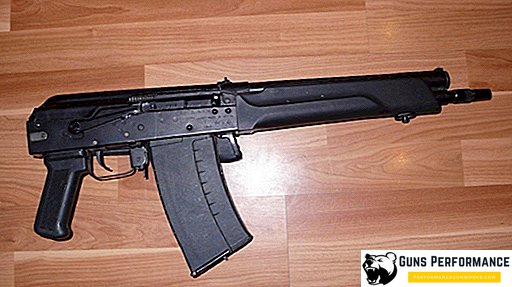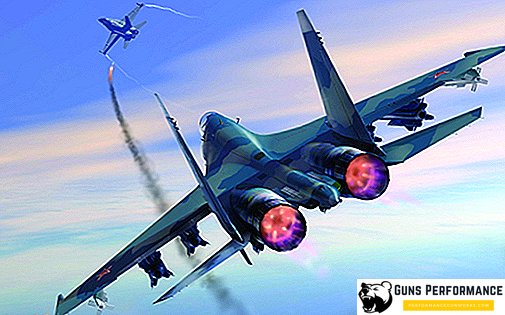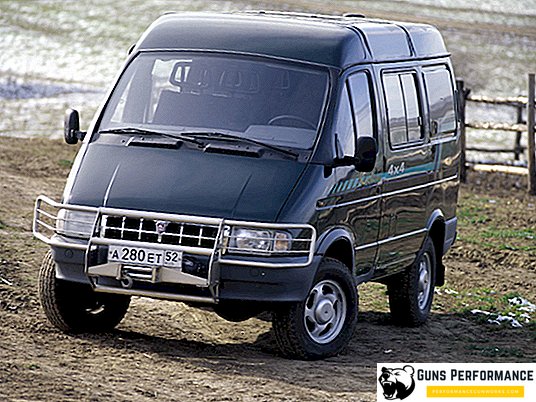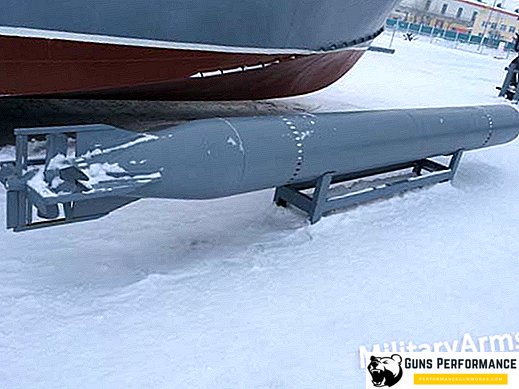The appearance of the first armor occurred long before the advent of military affairs, the war itself, and therefore the soldiers and the army. Stone Age people first learned how to make simple armor from animal skins. Armor is often associated with something metallic, but leather and fabric were much more common material for their manufacture. The skins became the prototype of the first leather and fabric armor. The skin protected the first people during the hunt. Of course, such armor could not save from serious wounds, because to give strength, the skin had to be processed, and such technologies would appear only thousands of years later. Yes, and military armor to anything, the guns were then extremely simple, and skirmishes with their own kind - rare.
Antique armor
The period of the first civilizations marked the beginning of the era of wars between states and the emergence of the army as an organization. People learned to process fabric, metal, leather, so in this era there were opportunities to create armor, which gave real protection. Leather armor, as well as fabric became the first on the way to the knight in armor. Metal learned to work for a very long time, but really strong armor appeared only in the late Middle Ages, so the fabric and leather for a long time remained in the foreground.
Egyptian armor
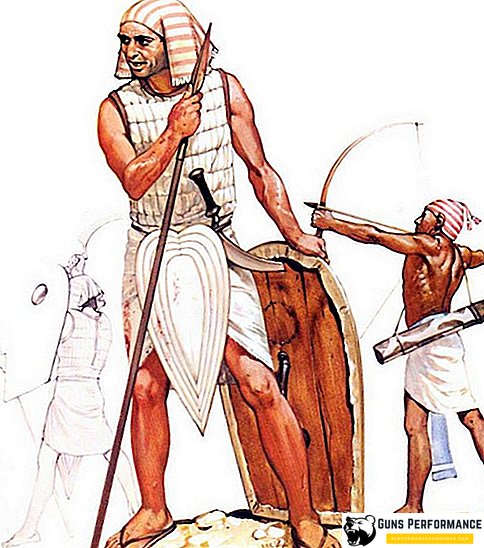
Ancient Egypt was not very different in climate from that of Egypt, which left an imprint on what armor the Egyptians used. Because of the unbearable heat and the relative high cost of manufacturing even cloth armor, ordinary soldiers almost never wore armor. They used a shield and wore traditional Egyptian wigs, which were made of solid leather and often had a wooden base. It was a kind of helmet that could soften the blow of a weapon popular at the time - a mace or club. Bronze axes were quite rare weapons, and you shouldn't talk about swords. This was only affordable for persons close to Pharaoh. The same can be said about the armor, even from fabric and leather. For many years, the excavation was almost not found a single metal shell, which indicates the high cost of its production and, possibly, low efficiency. Of course, chariots were the visiting card of the Egyptian army, as well as many armies of that period, so all noble, well-trained wars fought on the chariot. They mainly acted as mobile cavalry and archery. Such actions required considerable skill, in connection with which the warriors on chariots necessarily wore cloth or leather armor, because the loss of such a skilled soldier was not cheap. Not to mention the fact that often these were noble people.

Greek armor
Ancient Greece can rightly be considered as a kind of homeland of armor, in the sense in which we know it. The Hoplites are Greek heavy infantry. Light infantry was called - Peltasty. Their names come from the types of shields they used: hoplone and pelta, respectively. The warrior in armor in those days was no less terrible than the knights, dressed in full armor, riding on a horse. The best armies of the Greek polis consisted of wealthy citizens, because in order to become a member of the phalanx (a system of heavily armed infantrymen), it was necessary to buy equipment, and it cost a lot of money. The main means of protection was, of course, a large round shield - the goplon, which weighed about 8 kg and protected the body from neck to knees. Due to such a system, the hoplites, by and large, did not need to protect the body, because the phalanx assumed that the body would always be behind the shield. Despite the fact that at these times the processing of bronze reached a very high level, bronze armor was not as popular as cloth.

Linntoorax - battle armor of several layers of dense fabric, most often used by the hoplites, as well as light infantry and cavalry. The armor did not hamper the movement, and was a pleasant relief for an already bronzed soldier. The bronze version of the armor was called hippothorax, and often we can see it in anatomical form. Just like bracers and leggings, which seemed to fit the soldier’s muscles tightly. The scales never entrenched in Greece as the main type of armor, which could not be said of their eastern neighbors.
In addition to the shield, the famous attribute of the Greek hoplite was a helmet. Corinthian helmet can be considered the most recognizable. It is a fully enclosed helmet with eye and mouth cuts, which is T-shaped. The helmet was often adorned with horsehair, the decoration resembled a mohawk. In the history of the Greek helmet, there were two initial prototypes. The Illyrian helmet had an open face and no protection for the nose, and it also had cutouts for the ears. The helmet did not give such protection as Corinthian, but it was much more convenient in it, not to mention the best review. Subsequently, the Corinthian helmet evolves into the likeness of Illyrian, but most of its history will remain closed on all sides.
Roman armor
The Roman army is a kind of continuation and development of the ideas of the phalanx. At this time, the Iron Age comes. Bronze armor and cloth are replaced by iron, Roman legions adapt to modern materials. The use of the sword in the bronze age was ineffective, as it was necessary to come close to the enemy and break the line. Even the excellent swords of the Bronze Age were very short and weak. The spear was the weapon of the hoplite and many armies of this time. In the Iron Age, the sword is becoming more durable and long, there is a need for armor, which could effectively stop the slashing blows. So the heavy armor of the hoplite is replaced by a chain mail - lorica hamata. Mail is not very effective against a spear, but can stop a slashing blow of a sword or ax. Legions often fought with tribes that were not functioning as such; many of the barbarians from the north were armed with axes, which made chain mail an excellent defense.

With the evolution of blacksmithing goes the evolution of armor. Lorica segmentata - lamellar armor, Roman soldiers could be distinguished among many precisely for this armor. These combat armor replaced the chain mail, which eventually became ineffective against the German longswords, which became simple and cheap to manufacture, which made them commonplace in the armies of the tribes. Plates fastened in pairs on the chest and pistillate shoulder pads gave greater protection than chainmail.
The latest "new dress" of the Roman army, after the birth of Christ, was lorica sqamata. Scaled or lamellar armor was often used by auxiliary troops. Metal plates are overlapped with leather cords or metal rods, making the armor look like scales.

Gladiator armor
In the Roman era, armor was worn not only by soldiers, but also by gladiators — slave warriors fighting in arenas for the amusement of the public. Confirmed fact is the participation of women in the battles, but they are little studied, so men's armor is better known. Gladiator armor was unusual and sometimes not very effective, which is logical, because gladiator fights are held for the public, appearance and entertainment were in the first place. Gladiators often used helmets that were closed completely, sometimes with ornaments, and even with a serrated or sharpened crest to battle against the gladiator with the net. The torso was most often open, but the use of chest plates and cuirass was not an unusual phenomenon. Very often, plastic or chain sleeves could be seen with or without a shoulder pad, they covered the arm without a shield or the arm without a weapon. Leggings often looked like Greek, sometimes made of thick fabric. One of the types of gladiators, of which there were more than a dozen, had a plastic armor covering the whole body, and a closed helmet.

Early Medieval Armor
The fall of the Roman Empire and the migration of nations marked the beginning of the early Middle Ages - the starting point of the evolution of European armor. At this time, light armor is gaining popularity. In particular, cheap to manufacture and easy to use quilted armor. His weight was, according to various estimates, from 2 to 8 kg, the heaviest was among the Russian hemp armor, which covered his legs as well. Good protection was achieved by stitching up to thirty layers of fabric. Such armor could easily protect against arrows and chopping weapons. This type of armor was used in Europe for almost a thousand years and more, as in Russia, which is not surprising, since an excellent fabric armor could match the degree of protection with a chain mail. Armor from the Roman era, specifically lamellar armor, was also popular at this time. He was easy to manufacture and gave the proper level of protection.

A more advanced version of fabric armor had metal plates of various sizes sewn into or on top of the armor. Such armor is found mainly in more affluent soldiers.
Helmets in this era were basically similar to metal caps, sometimes with a kind of protection for the nose or face, but most of them only protected the head. In the post-Roman era, a fairly rapid transition to chain mail begins. German and Slavic tribes begin to wear chain mail over clothing or quilted armor. In that era, weapons and military strategy assumed close combat, rarely in an organized ranks, so this kind of defense was extremely reliable, because the weak point of chain mail was just a spear standoff. Helmets start to "grow", covering the face more and more. They begin to wear chain mail on their heads, sometimes even without a helmet. The length of chain mail on the body also increases. Now the battle armor looks like a chainmail coat. The cavalry's armor often included chain mail for the legs.

Subsequently, for almost 600 years, the armor does not change, only the length of chain mail increases, which in the 13th century becomes almost second skin and covers the entire body. However, the quality of chain mail during this period, even if it was superior to the early chain mail, still lagged behind the quality of the weapon. Mail was extremely vulnerable to spears, arrows with a special tip, mace strikes and similar weapons, and even heavy swords could cause a fatal injury to a warrior. And what can we say about the crossbow bolts that pierced the chain mail like paper, and were extremely common in European armies. In this regard, it was only a matter of time - when will armor appear that can solve these problems. Since the end of the 13th century, plate armor has become common in Europe - the crown of blacksmithing of the Middle Ages, the strongest armor in the world. Armor was made of steel sheets, and they covered the body first, and after a short time, arms and legs, and then - completely chained the warrior into steel. Only a few points remained open in order to be able to move at all, but also they subsequently began to close. It was the golden age of heavy cavalry, from which the infantry began to panic. The legendary armor of the knights, made with quality, were practically impenetrable for the weapons of the militias. It happened that the knight, knocked off his horse during the attack, simply could not finish. Of course, such a set of armor could cost more than a small village with an estate, and was available only to the aristocracy and the knightly class.

Sunset armor
Heavy European medieval armor becomes a relic of history with the widespread introduction of firearms and artillery. The first samples of the firearm were extremely unreliable, efficiency was tens of meters, they needed to be recharged before the second coming, so the heavy armor did not immediately leave the stage of the theater of war. However, in the Renaissance era, armor could only be seen at ceremonies and coronations. Breastplate comes to replace plate armor. The breast armor of the new design allowed the bullets and long peaks to ricochet from armor, for this a so-called rib was created on the cuirass, in fact the armor seemed to be pulled forward and created an angle, which should have contributed to the chance of rebounding. With the advent of more modern types of guns at the end of the 17th century, the breastplate finally lost its meaning.

Also, the 18th century was marked by the transition to regular armies that were maintained by the states. Since the armor at a reasonable price was not adequate, they were abandoned altogether. However, the need for heavy cavalry did not go anywhere, and the good quality cuirass still gave acceptable protection. Now only cavalrymen - cuirassiers, heavy cavalry of the new generation wear combat armor on the battlefield. Their armor made it possible to feel calm at a distance of 100 meters from the enemy troops, which could not be said of ordinary infantrymen, who began to "crumble" at a distance of 150-160 meters.
Further changes in weapons and military doctrine finally put the armor out of action. The warriors of the new time were already without the use of armor.

Armor in Russia
Before the arrival of the Mongols, Russian armor evolved in roughly the same way as in Europe. Chain mail armor remained the main defense of the Russian war, until the appearance of small arms. As in China, the era of knights and heavy armored cavalry did not come. Russian warrior always had to remain mobile and "light". In this regard, medium armor looked more reasonable choice in the fight against the nomadic armies, relying on mobility and horse archers, so the Russian armor did not go to the armor. Horseman's armor could be heavier, but still remained in the middle category. Thus, in addition to standard chain mail, combat armor in Russia took the form of scales, chain mail with metal plates, as well as mirror armor. Such armor was worn over the chain mail and was a metal plate - a mirror, creating a kind of cuirass.

Japanese armor
Japanese warrior in armor, called a samurai, is known to all. His weapons and armor have always been very prominent in the "crowd" of medieval armor and chain mail. As in other regions, the samurai did not use armor. Samurai's classic armor was mostly lamellar, but chest plates and cuirass were also used. Different parts of the armor could be made in "chain tones." The Japanese chain mail differed from the European one not only in its appearance, but also in its smaller weaving. Classic Japanese armor consisted of:
- the helmet, which covered the cavity with the head and often the face, was usually covered with an intimidating mask, the helmet often had horns;
- lamellar armor, sometimes reinforced with a plate, like a mirror or with a cuirass on top;
- Leggings and bracers, metallic or lamellar, there could be chain mail gloves and shoes under them;
- armor on the shoulder, made of different materials, but their interesting feature was the convenience of wearing for archers. In Europe, the archer never wore shoulder pads, because they strongly interfered with shooting, while in Japan, the shoulder pad seemed to crawl back while pulling on the string and came back when the samurai fired a shot.
Such armor as well as in the case of the knights, was an indicator of status and wealth. Ordinary soldiers used simpler armor, sometimes chain mail or a mixture.

Modern armor
The First and Second World War showed a new order in the conduct of the war. The armor became a relic of the past, cavalry was also ineffective, therefore it was hardly used. In this era of the armor was only a helmet - a helmet. Helmets protected the head not so much from bullets, as from pieces of rock and stones falling after a shell hit the ground nearby. Attempts to make the first body armor were already in the First World War. The bulky plates of metal gave protection, but they hindered the movement of the soldier, therefore they were good only in urban combat. A little better body armor looked and in the second world, so this type of protection did not become ubiquitous. The beginning of the era of body armor was the war in Korea. Vest protected from fragments of mines, grenades, bombs and bullets. Between 1950-1990, body armor becomes part of army armor around the world. In 1990, however, a new stage in the development of modern armor begins; Equipment becomes larger, covering more and more parts of the body. The bulletproof vest turns into an individual protection complex and can be tailored to the task of a soldier or certain conditions. Perhaps the evolution of modern armor will go in a similar way, increasing the degree of protection of the soldiers, until they are completely encased in the likeness of knight armor.

Armor evolved with weapons. As soon as the defense appeared, a weapon appeared that could overcome it. And even if in this race the weapon is often more perfect, the creators of the armor do not lag behind, and sometimes come forward, if not for long.




